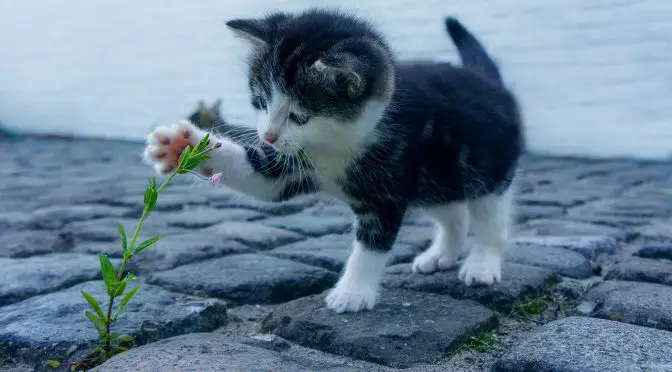Many cat owners have experienced the frustration of finding their feline friend peeing on their dog’s bed.
Various reasons, including territorial marking, anxiety, or medical issues, can cause this behavior. Whatever the cause, it’s essential to address the behavior promptly to prevent it from becoming a habit.
Fortunately, there are several steps you can take to stop your cat from peeing on the dog bed.
The first step in addressing this behavior is to rule out any underlying medical issues.
A urinary tract infection or other medical condition could be causing your cat to urinate outside the litter box. If you suspect a medical issue, taking your cat to the vet for a check-up is essential.
Once medical issues have been ruled out, you can begin addressing the behavior through environmental and behavioral modifications.
Understanding Your Cat’s Behavior
Cats are fascinating creatures with unique personalities, but sometimes, their behavior can be frustrating for their owners. If your cat is peeing on the dog bed, it’s essential to understand why they are doing it. This section will explore some common reasons why cats exhibit this behavior.
Identifying Stress Triggers
Cats are sensitive animals and can become stressed for a variety of reasons. Stress can cause cats to urinate outside their litter box, including on the dog bed. Some everyday stress triggers for cats include:
- Changes in routine or environment
- Introduction of a new pet or family member
- Loud noises or sudden movements
- Illness or injury
- Lack of attention or playtime
If your cat is exhibiting stress-related behavior, it’s essential to identify the trigger and take steps to reduce their stress. This may include providing a safe and quiet space for your cat, increasing playtime and attention, or consulting with a veterinarian for medical treatment.
Recognizing Medical Issues
Cats may sometimes urinate outside their litter box due to medical issues. If your cat consistently pees on the dog bed, it’s essential to rule out any underlying health problems. Some medical issues that can cause cats to urinate outside of their litter box include:
- Urinary tract infections
- Bladder stones
- Kidney disease
- Diabetes
- Arthritis or other mobility issues
If you suspect your cat may have a medical issue, it’s essential to consult with a veterinarian as soon as possible. Early detection and treatment can help prevent further health complications and improve your cat’s quality of life.
Understanding your cat’s behavior is the first step in addressing unwanted behavior, such as peeing on the dog bed.
By identifying stress triggers and recognizing any underlying medical issues, you can take steps to help your cat feel more comfortable and prevent future accidents.
Creating a Comfortable Environment for Your Cat
Cats can be very particular about their environment, sometimes leading to inappropriate elimination behavior. Creating a comfortable environment for your cat can help to reduce stress and prevent peeing on the dog bed.
Providing Adequate Litter Boxes
One of the most important things you can do to create a comfortable environment for your cat is to provide adequate litter boxes. The general rule of thumb is to have one more litter box than the number of cats in your household.
For example, you should have three litter boxes if you have two cats.
Choosing the correct type of litter box for your cat is also important. Some cats prefer covered litter boxes, while others prefer open ones. You may need to experiment with different litter boxes to find the one your cat likes best.
Establishing Safe Spaces
Cats need safe spaces to retreat when they feel stressed or threatened. These safe spaces should be in quiet areas of your home where your cat can relax and feel secure.
You can create safe spaces for your cat by providing cat trees, hiding places, and cozy beds. These safe spaces should be located in areas of your home where your cat spends a lot of time, such as the living room or bedroom.
By providing your cat with adequate litter boxes and safe spaces, you can create a comfortable environment that will help to reduce stress and prevent inappropriate elimination behavior.
Training Your Cat
Training your cat is the most effective way to stop it from peeing on the dog bed. Two primary methods of training your cat are Positive Reinforcement and Use of Deterrents.
Positive Reinforcement
Positive reinforcement is a method of training that involves rewarding your cat for good behavior. This method is based on the principle that cats will repeat behaviors associated with positive outcomes.
To train your cat using positive reinforcement, follow these steps:
- Observe your cat’s behavior and identify the actions that you want to encourage.
- Reward your cat immediately after it exhibits the desired behavior. Rewards can include treats, praise, or playtime.
- Be consistent with rewards and provide them whenever your cat exhibits the desired behavior.
- Gradually reduce the frequency of rewards as your cat becomes more consistent with the desired behavior.
Use of Deterrents
The use of deterrents is another effective method of training your cat. Deterrents are designed to discourage your cat from engaging in unwanted behaviors by making them unpleasant or uncomfortable.
To train your cat to use deterrents, follow these steps:
- Identify the areas where your cat is peeing and place deterrents in those locations. Deterrents can include citrus sprays, aluminum foil, or double-sided tape.
- Be consistent with the use of deterrents and ensure that they are always in place.
- Do not punish your cat for peeing on the dog bed. Punishment can cause your cat to become anxious or fearful, which can exacerbate the problem.
- Provide your cat with alternative places to pee, such as a litter box or a designated area outside.
You can effectively train your cat to stop peeing on the dog bed using positive reinforcement and deterrents. Be patient and consistent with your training; your cat will learn to exhibit the desired behavior over time.
Consulting a Professional
If the previous methods do not work, it may be time to consult a professional. Two types of professionals can help with this issue: veterinarians and cat behaviorists.
Visiting a Veterinarian
If your cat suddenly starts urinating outside their litter box, it may be due to a medical issue. Taking your cat to a veterinarian to rule out any underlying health problems is essential.
Some medical issues that can cause cats to urinate outside their litter box include urinary tract infections, bladder stones, and diabetes. A veterinarian can perform a physical exam and run tests to determine if a medical issue is causing the behavior.
Hiring a Cat Behaviorist
If your cat has been cleared of any medical issues, it may be necessary to hire a cat behaviorist. A cat behaviorist is a professional who specializes in cat behavior and can help identify the root cause of the problem.
They can provide solutions and strategies to help modify your cat’s behavior. A behaviorist may recommend changes to your cat’s environment, litter box, or feeding schedule. They may also suggest behavior modification techniques such as positive reinforcement training.
When hiring a cat behaviorist, it is essential to choose someone who is certified and experienced. Look for someone with a good reputation and positive reviews from previous clients. A good behaviorist will work with you and your cat to develop a personalized plan for your needs and lifestyle.
Remember, consulting a professional should always be a last resort. Try the previous methods first before seeking professional help. You can stop your cat from peeing on the dog bed with patience and persistence.
Conclusion
Stopping a cat from peeing on the dog bed can be challenging, but it is not impossible. Following the tips and tricks mentioned in this article, cat owners can effectively prevent their feline friends from using the dog bed as a litter box.
It is important to remember that cats are creatures of habit, and breaking their habits can take time and patience. Consistency is key, and owners should persistently redirect their cat’s behavior.
Some of the most effective strategies include providing multiple litter boxes, keeping the litter boxes clean, and using deterrents such as citrus sprays or double-sided tape. Additionally, providing separate sleeping areas for cats and dogs can help reduce competition and territorial behavior.
Preventing a cat from peeing on the dog bed requires patience, persistence, and creativity. With the right approach, cat owners can successfully train their feline friends to use the litter box and keep the dog bed pee-free.
[su_box title=”Affiliate Disclosure”]This website is supported by its readers. Please assume that all links are affiliate links. If you make a purchase from one of the links we will make a commission from Amazon. Thank you.[/su_box]




